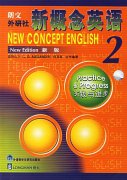高中英语语法:引导副词从句的从属连词
编辑:高中作文网高中英语语法:引导副词从句的从属连词
引导副词从句的从属连词根据其引导的副词从句的意义可分为:
1. 引导时间状语从句的从属连词及词组
(1) as,after,before,once,since,till,until,when,while 等。如:
He came up while I was speaking.
我正说话时他来了。
when,while,as 在引导时间状语从句时,译成汉语都是“当……时”,但有区别。其区别是:
时间上的同时性。表示在时间的某一时刻主句和从句的动作同时进行时,如果主句和从句中的动词是短暂动词,用 as 和 when。如:
He arrived just as/when we stepped into a taxi.
我们刚跨进出租车他就到了。
若主句、从句动作不是同时发生,只能用 when。如:
When he had had breakfast, the day’s work began.
他吃过早饭,一天的工作就算开始了。
若表示的两个动词在某一段时间内都在持续进行,要用 while(此时用于 while-从句中的动词必须是持续动词)。如:
They arrived while we were having dinner.
他们来的时候我们正吃饭。
若主句中动词不是持续动词,又表示该动作发生在 while- 从句中所表示那段时间中的某一点,此时可用 when/as 代替 while。如:
As we were having breakfast, a postman called.
我们正在吃早饭时,邮递员叫门了。
表示“一段时间内”的同时性时,while 与 as 可以互换。此时主句和从句中动词必须是持续性动词,但有区别。用 while 强调的是主句动词贯穿于 while- 从句所表示时间的始终;用 as 则强调两个动作的同时进行。如:
She waited outside while I fetched her the coat.
我给她取衣服时她在外边等着。
(2) 从属连词词组有 as long as,as soon as,hardly/scarcely/barely… when,no sooner than,every time when…
I’ll tell you as soon as I know.
我一知道就告诉你。
no sooner… than… 和 hardly/scarcely… when;虽然译成汉语都是“一……就……”,但有区别。区别如下:
当表示两件事紧接着发生时用 no sooner… than… 如:
He had no sooner pulled down the huts than he found a snake.
他刚拆掉小屋就发现一条蛇。
当前一件事导致了后一件事的发生时用 no sooner… than… 如:
He had no sooner found the tomb than he asked men to guard it.
他一发现那座墓就让人看守着。
表示后一件事的发生往往是出乎意料时用 hardly… when… 如:
He had hardly entered the room when he found his TV set stolen.
他一进屋就发现电视机被盗了。
表示“一…就…”,还可以用副词 immediately, directly 等。如:
I came directly I got your message.
我听到信儿就来了。
此外,还有一些表示时间的名词词组,如:the moment,the minute,the instant,every time,next time 等,这些词也可以引导时间状语从句。如:
The instant we heard the alarm, we fell in for action.
我们一听到警报就立即行动起来。
2. 引导地点状语从句的从属连词 where 和 wherever
如:Make a mark where you stop.
在停的地方做了记号。
3. 引导方式状语从句的从属连词
引导方式状语从句的从属连词主要是 as,as if 或 just as 口语中有时用 like。 如:
Lucy cried as if her heart would break.
露西哭得好像心要碎了。
4. 引导原因状语从句的从属连词
引导原因状语从句的从属连词主要有 3 个:as,because 和 since。其中 because 语气最强,as 的语气最弱。如:
I bought an umbrella because I thought it might rain.
我买了一把伞,我原以为天可能要下雨。
since,as,because 在引导原因状语从句时有以下几点区别:
as 和 since 引导的从句一般在主句之前,引导一个显而易见的事实以说明主句动作的理由,英语多用 as,美语多用 since。 如:
As it is cold outside, I’ll put on my overcoat.
因为外边很冷,我就穿上大衣。
because 引导的原因状语从句,一般放在主句之后,重在说明主句动作的原因或理由。如:
Did he come because he wanted money?
他是需要钱才来的吗?
当原因状语被强调或被否定时,要用 because,不能用 as,不能用 since。如:
He will surely succeed for he works hard.
他肯定会成功,因为他学习很用功。
It is because he works hard that he will surely succeed.
正是因为他学习很用功,他才会成功。
在书面语中还用 in that,now that 引导状语从句表示原因。如:
Now that you mention it, I do remember.
你一提这事我想起来了。
用 now that 引导原因状语从句时,主句和从句的时间必须一致,否则不能用 now that。
5. 引导让步状语从句的从属连词
(1) 引导让步状语从句的从属连词用 though,although,even if/though 和 as 等。如:
Though he is old, he still works hard.
尽管他年纪大了,他还是努力工作。
(2) 引导让步状语从句时,用 although 比用 though 正式。如:
Though he may fail, he will try again.
尽管他可能会失败,他还会一试。
Although it has been raining hard, the road is passable.
尽管天一直下雨,路还是可以通行的。
但 though 前可用 even 强调,although 则不能用 even 强调。如:
Even though he doesn’t understand a word, he kept smiling.
尽管他听不懂话,他还是一直微笑。
(3) 用 though/although 引导让步状语从句时,主句前可以用副词 yet,still, nevertheless 加强转折,但不能使用并列连词 but 表示转折。如:
Though he is over seventy, yet he can ride the bike.
尽管他已年逾七十,他还能骑自行车。
(4) as 引导让步状语时,通常要使用倒装语序,但有时也可用 though 代替。如:
Poor as the old man was, he always managed to help the others.
(5) as 用于上面的句型,有时不是表示让步,而是表示原因。如:
Tired as she was, I decided not to disturb her.
因为她很累,我决定不去打扰她了。
(6) while 也可引导让步状语从句,但语气较轻,重点在于突出对比主句与从句的差异。如:
While I like the colour of the hat, I do not like its shape.
尽管我喜欢帽子的颜色,但不喜欢它的样式。
(7) whether… or 引导的让步状语从句,表示两个对比的情况,且有条件含义。如:
Whether the weather is good or bad, they will set off as they planned.
不管天气好坏,他们都要按原计划动身。
(8) whatever 与 no matter what 等引导让步状语时表示无论在什么情况下的随意选择,这种从句有时使用 may。如:
Whatever happens we shall not lose hope.
无论发生什么事情,我们都不能失去希望。
6. 引导条件状语从句的从属连词
(1) if,unless
You’ll miss the bus if you don’t hurry.
如果你不快点,你就赶不上汽车了。
请注意以下几点:
多数情况下,unless 的意义(尤其在真实条件句中)相当于 if… not,但通常用于真实条件句中,表示除惟一条件。如:
You will be late unless you set off earlier.
如果不早点走,你就会迟到。
在虚拟条件句中通常用 if… not。如:
If she weren’t so silly, she would understand.
如果她不是太傻的话,她会明白的。
在表示只有从句动作不发生,主句动作才有可能出现时,只能用 if… not 而不用unless。 如:
I’ll be glad if she doesn’t come this evening.
今晚她要不来,我才高兴呢。
(2) providing/provided that, on condition that 和 supposing that
I will go providing that my expenses are paid.
只要报销开支我就去。
(3) as 和 so long as
You can go where you like so long as you get back before dark.
只要在天黑前能回来,你爱去哪儿就去哪儿。
7. 引导结果状语的从属连词
引导结果状语的从属连词用 so… that, such… that 或 so that
(1) so… that
They talked so fast that I could hardly put in a word.
他们说得太快了,我连一句话也插不进去。
(2) such… that
He told us such a funny story that we all laughed.
他给我们讲的故事很滑稽,我们都笑了。
8. 引导目的状语的从属连词
(1) 引导状语从句时用 so that 和 in order that
He works no Sundays so that he can earn enough to pay his tuition.
他星期天也工作,为的是能挣够交学费的钱。
在通常情况下,so that 引导的目的状语从句出现在句末,有时也可以把 so that引导的目的状语从句放在主句之前。如:
So that we could see the sunrise, we started for the peak early.
为了能够看到日出,我们一早就向山峰出发了。
(2) lest,in fear that,for fear that,in case that 通常从相反的角度表示目的,从句谓语用 should +动词原形。如:
She explained again and again lest others should misunderstand her.
她再三解释,惟恐大家误会了她。 高中英语语法:引导副词从句的从属连词
引导副词从句的从属连词根据其引导的副词从句的意义可分为:
1. 引导时间状语从句的从属连词及词组
(1) as,after,before,once,since,till,until,when,while 等。如:
He came up while I was speaking.
我正说话时他来了。
when,while,as 在引导时间状语从句时,译成汉语都是“当……时”,但有区别。其区别是:
时间上的同时性。表示在时间的某一时刻主句和从句的动作同时进行时,如果主句和从句中的动词是短暂动词,用 as 和 when。如:
He arrived just as/when we stepped into a taxi.
我们刚跨进出租车他就到了。
若主句、从句动作不是同时发生,只能用 when。如:
When he had had breakfast, the day’s work began.
他吃过早饭,一天的工作就算开始了。
若表示的两个动词在某一段时间内都在持续进行,要用 while(此时用于 while-从句中的动词必须是持续动词)。如:
They arrived while we were having dinner.
他们来的时候我们正吃饭。
若主句中动词不是持续动词,又表示该动作发生在 while- 从句中所表示那段时间中的某一点,此时可用 when/as 代替 while。如:
As we were having breakfast, a postman called.
我们正在吃早饭时,邮递员叫门了。
表示“一段时间内”的同时性时,while 与 as 可以互换。此时主句和从句中动词必须是持续性动词,但有区别。用 while 强调的是主句动词贯穿于 while- 从句所表示时间的始终;用 as 则强调两个动作的同时进行。如:
She waited outside while I fetched her the coat.
我给她取衣服时她在外边等着。
(2) 从属连词词组有 as long as,as soon as,hardly/scarcely/barely… when,no sooner than,every time when…
I’ll tell you as soon as I know.
我一知道就告诉你。
no sooner… than… 和 hardly/scarcely… when;虽然译成汉语都是“一……就……”,但有区别。区别如下:
当表示两件事紧接着发生时用 no sooner… than… 如:
He had no sooner pulled down the huts than he found a snake.
他刚拆掉小屋就发现一条蛇。
当前一件事导致了后一件事的发生时用 no sooner… than… 如:
He had no sooner found the tomb than he asked men to guard it.
他一发现那座墓就让人看守着。
表示后一件事的发生往往是出乎意料时用 hardly… when… 如:
He had hardly entered the room when he found his TV set stolen.
他一进屋就发现电视机被盗了。
表示“一…就…”,还可以用副词 immediately, directly 等。如:
I came directly I got your message.
我听到信儿就来了。
此外,还有一些表示时间的名词词组,如:the moment,the minute,the instant,every time,next time 等,这些词也可以引导时间状语从句。如:
The instant we heard the alarm, we fell in for action.
我们一听到警报就立即行动起来。
2. 引导地点状语从句的从属连词 where 和 wherever
如:Make a mark where you stop.
在停的地方做了记号。
3. 引导方式状语从句的从属连词
引导方式状语从句的从属连词主要是 as,as if 或 just as 口语中有时用 like。 如:
Lucy cried as if her heart would break.
露西哭得好像心要碎了。
4. 引导原因状语从句的从属连词
引导原因状语从句的从属连词主要有 3 个:as,because 和 since。其中 because 语气最强,as 的语气最弱。如:
I bought an umbrella because I thought it might rain.
我买了一把伞,我原以为天可能要下雨。
since,as,because 在引导原因状语从句时有以下几点区别:
as 和 since 引导的从句一般在主句之前,引导一个显而易见的事实以说明主句动作的理由,英语多用 as,美语多用 since。 如:
As it is cold outside, I’ll put on my overcoat.
因为外边很冷,我就穿上大衣。
because 引导的原因状语从句,一般放在主句之后,重在说明主句动作的原因或理由。如:
Did he come because he wanted money?
他是需要钱才来的吗?
当原因状语被强调或被否定时,要用 because,不能用 as,不能用 since。如:
He will surely succeed for he works hard.








